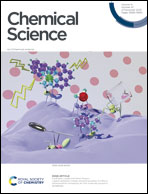Cu-based catalyst designs in CO2 electroreduction: precise modulation of reaction intermediates for high-value chemical generation
Abstract
The massive emission of excess greenhouse gases (mainly CO2) have an irreversible impact on the Earth's ecology. Electrocatalytic CO2 reduction (ECR), a technique that utilizes renewable energy sources to create highly reduced chemicals (e.g. C2H4, C2H5OH), has attracted significant attention in the science community. Cu-based catalysts have emerged as promising candidates for ECR, particularly in producing multi-carbon products that hold substantial value in modern industries. The formation of multi-carbon products involves a range of transient intermediates, the behaviour of which critically influences the reaction pathway and product distribution. Consequently, achieving desirable products necessitates precise regulation of these intermediates. This review explores state-of-the-art designs of Cu-based catalysts, classified into three categories based on the different prospects of the intermediates' modulation: heteroatom doping, morphological structure engineering, and local catalytic environment engineering. These catalyst designs enable efficient multi-carbon generation in ECR by effectively modulating reaction intermediates.

- This article is part of the themed collections: Celebrating the scientific accomplishments of RSC Fellows, Most popular 2023 catalysis articles and 2023 Chemical Science Perspective & Review Collection


 Please wait while we load your content...
Please wait while we load your content...